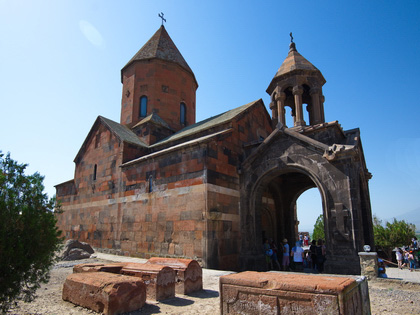Noravank Monastery, Armenia
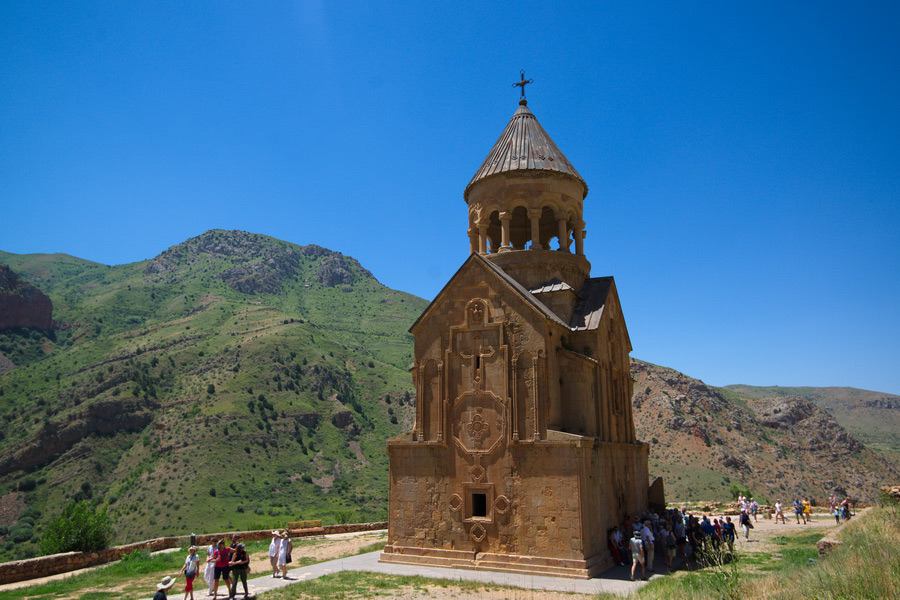
Noravank means “New Monastery” in Armenian. However, today this name does not fit, as the monastery is already more than seven centuries old. The beautiful Noravank Monastery was built in the 13th century on the ledge of narrow winding gorge above the Amaghu River, near the city of Yeghegnadzor. The spare lines of the church contrast beautifully with the sharp red rock cliffs, and the dramatic scenery is one of the best reasons to visit Noravank. The monastery is sometimes called Amagu Noravank, to distinguish it from Noravank Monastery in the city of Goris. Amagu is the name of a small settlement which used to stand over the gorge.
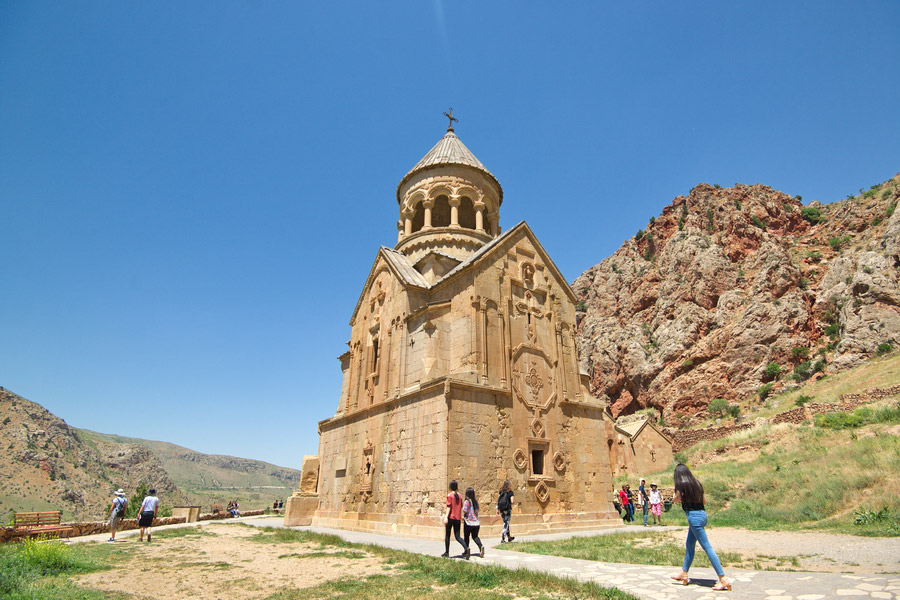
In the days when the Orbelyan princes were ruling this region, the monastery was a large religious centre, and in the 13th through 14th centuries it became a residence of Syunik Province's bishops. Noravank became a major religious and later a cultural center of Armenia, and was closely connected with many educational institutes, primarily with the University of Gladzor and its library. According to a legend, a piece of the True Cross, stained with the blood of Christ, was hidden there.
In 1216-1223 the first church at the monastery was built and named Surb Karapet Church (St. John the Baptist). The temple is distinguished by strict decorative ornamentation. Inside it are deep niches with khachkars. The sculptor of Noravank became famous for his depictions of the saints in strikingly human poses, including Jesus, Adam, and even God. A small corner shows samples of typical designs so that students could study them. In 1275, the modest rectangular Surb Grigor Church, which became the tomb of prince Smbat Orbelyan, was added to the northern side of the main temple. Its walls from both sides of the altar are decorated with khachkars and images of doves.
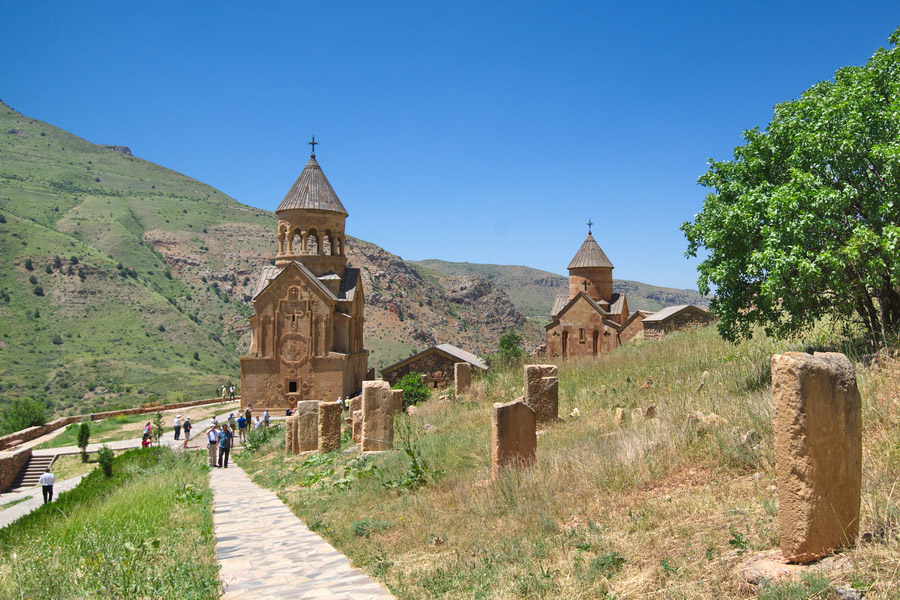
The most magnificent building of the monastery is the two-storey St. Astvatsatsin Church, constructed in 1339 by Prince Burtel Orbelyan. The building is a classic architectural monument. The rectangular church rests upon a powerful high foundation, which gives it a majestic and monumental air. The main facade of the temple is cross-shaped and is decorated with a carved cross and several saints. In the church’s centre, a beautiful dome is decorated with arched columns and modelled eaves towers. The semi-basement first floor of the church serves as the tomb of the Orbelyan family. Above the tomb, on the second floor, there is the cross-shaped chapel. There are steep stairs leading up to the second floor. The decoration of church is more reserved in the lower part of the building and more elegant in the upper part. The carvings and images on the outside of both churches are truly spectacular. They were done in the 14th century by Momik, who was famous for his human depictions of religious figures.
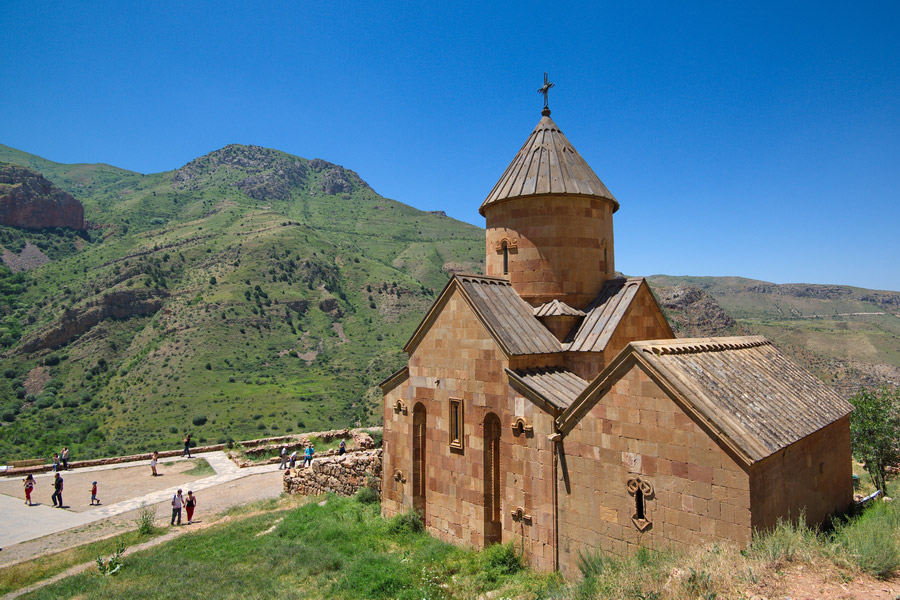
Pay special attention to the writings and alphabet at Noravank Monastery. The Armenian alphabet was designed so that a single swastika (visible on a khachkar outside Surb Karapet) was a monogram of the alphabet: every letter could be found in its shape. This same idea was repeated in inscriptions around the complex, with words written with all of their letters found in a single shape. This saved space, so that more could be written. During the unstable times, when invasions and destruction were common, Armenian history was written carved into the church walls, and words were written as monograms, with all the letters stacked on top of each other, in order to save space.
In the 17th-18th centuries the monastery was surrounded by a fence with adjacent structures. Behind the fence from the eastern side are the ruins of a chapel and one khachkar remaining of a hotel built in the middle of the 13th century.
In 2002 the Noravank Monastery was included into UNESCO World Heritage Sites List.


